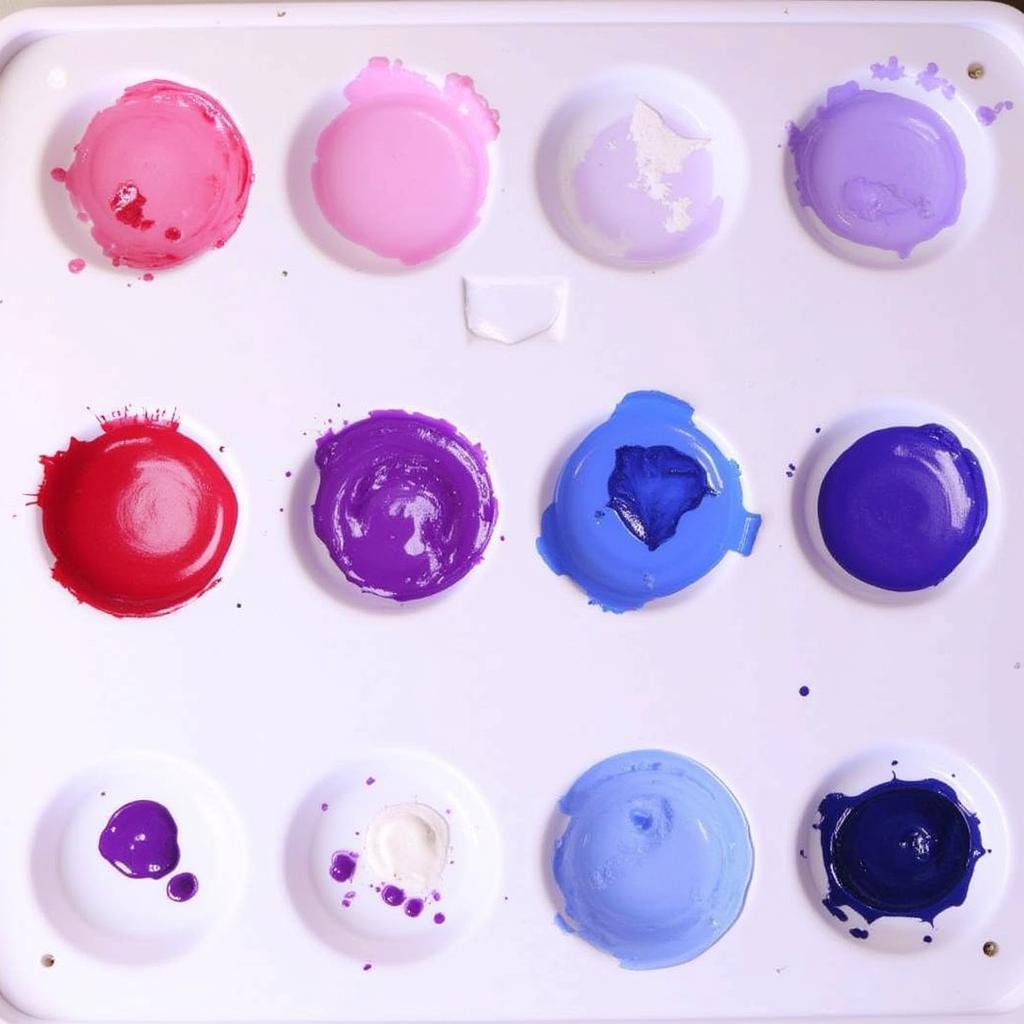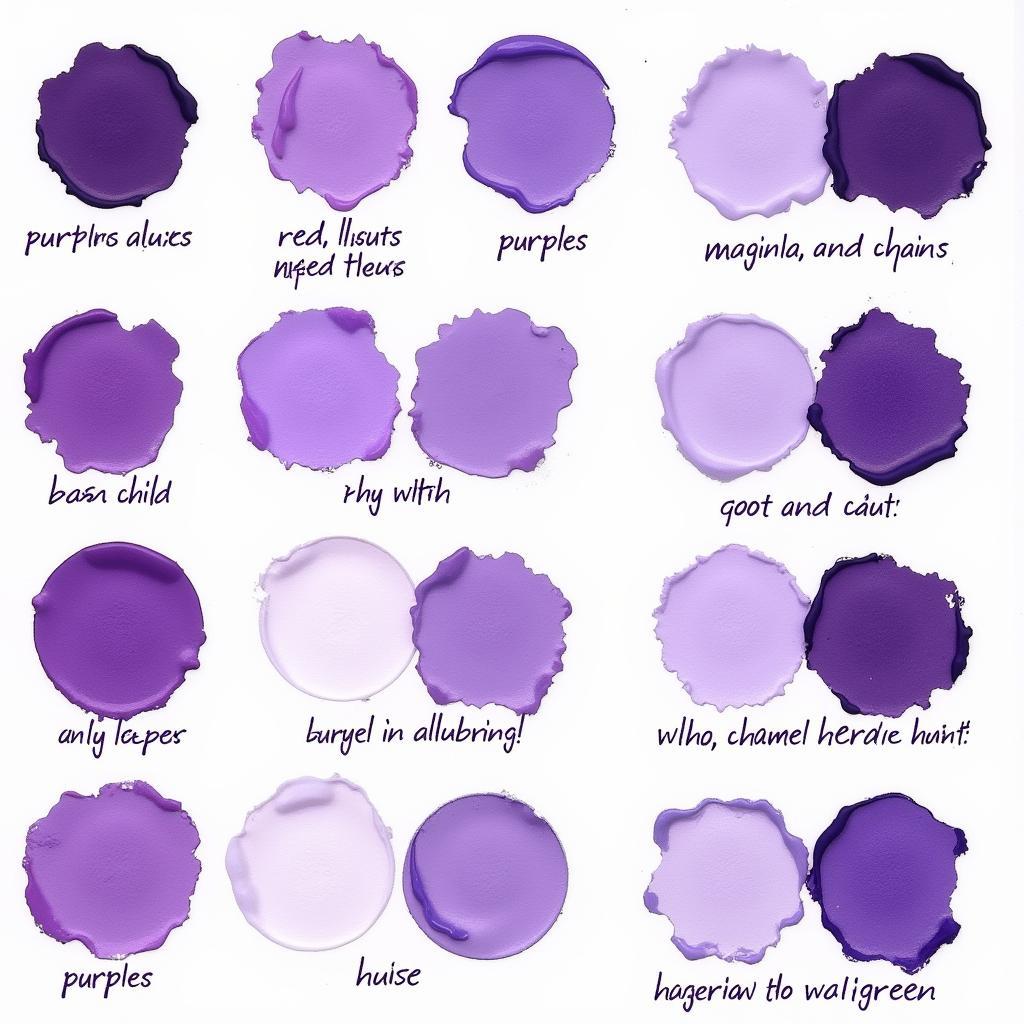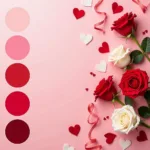Purple, a color often associated with royalty, mystery, and creativity, isn’t found on the basic color wheel. It’s a secondary color, meaning it’s created by mixing two primary colors. But what colors make purple when mixed? Let’s delve into the fascinating world of color mixing and uncover the secrets behind creating this captivating hue. You’ll be surprised by the nuances and variations possible! Learn how to achieve the perfect purple for your next painting, design project, or even just to satisfy your curiosity.
The Foundation: Red and Blue
The most common way to make purple is by mixing red and blue. This seems simple enough, but the specific shade of purple you achieve depends on several factors. The ratio of red to blue is key. More red results in a warmer, red-violet hue, while more blue creates a cooler, blue-violet shade.
Understanding the Impact of Different Reds and Blues
Not all reds and blues are created equal. A crimson red will yield a different purple than a scarlet red. Similarly, a cobalt blue will produce a different result compared to a cerulean blue. Experimenting with different combinations is the best way to discover the wide range of purples you can create.
Beyond the Basics: Exploring Other Color Combinations
While red and blue are the foundation, other colors can influence the final purple hue. White can be added to lighten the purple, creating pastel shades like lavender. Black can be added to darken the purple, resulting in deep, rich tones like eggplant.
Adding White and Black: Tints and Shades of Purple
Adding white to your red and blue mix creates tints of purple, ranging from delicate lilac to soft periwinkle. Adding black, on the other hand, creates shades of purple, like deep plum or mysterious indigo.
 Mixing Red and Blue to Create Various Shades of Purple
Mixing Red and Blue to Create Various Shades of Purple
What Two Colors Mixed Together Make Purple? The Quick Answer
For a straightforward answer: Red and blue are the two colors mixed together to make purple.
Fine-Tuning Your Purple: Achieving Specific Shades
What colors are mixed to make purple with a specific undertone? Adding a touch of yellow to your red and blue mix can create a warmer, more vibrant purple. Adding a touch of green can create a more muted, gray-violet. These subtle additions can greatly impact the final result.
what two colors mixed together make purple
What Colors are Mixed to Make Purple in Different Mediums?
The medium you’re working with also plays a role. Mixing paint is different from mixing light. In painting, red and blue create purple. However, in light, red and blue create magenta. This difference is due to the subtractive nature of pigment and the additive nature of light.
The Science Behind Purple: Pigments vs. Light
“Understanding the science of color mixing is crucial for achieving consistent results,” says renowned color specialist, Anya Sharma. “Pigments absorb certain wavelengths of light, while light emits wavelengths. This fundamental difference explains the variation in color mixing outcomes across different mediums.”
what colors mixed together make purple
Creating Purple with Unexpected Colors: Advanced Techniques
Beyond the traditional red and blue, certain other color combinations can surprisingly create shades of purple. For instance, mixing magenta and cyan can result in a vibrant purple, particularly in digital mediums.
Exploring Unconventional Methods
Experimenting with different color combinations and mediums can lead to exciting discoveries and unique purple hues. Don’t be afraid to push boundaries and explore unconventional methods.
 A Wide Range of Purple Hues Created Using Different Color Combinations and Techniques
A Wide Range of Purple Hues Created Using Different Color Combinations and Techniques
What Color Does Pink and Purple Make?
Mixing pink and purple creates a lighter, more muted version of purple, often leaning towards mauve or lilac. The exact shade depends on the intensity of the pink and purple used.
what color does pink and purple make
Conclusion: Mastering the Art of Mixing Purple
Understanding what colors make purple when mixed opens up a world of creative possibilities. By experimenting with different reds and blues, adjusting ratios, and incorporating other colors, you can achieve a wide spectrum of captivating purple hues. Whether you’re a painter, a designer, or simply curious about color, mastering the art of mixing purple allows you to express your unique vision and create stunning visual experiences. Remember, the key is to experiment and have fun!
FAQ
- What are the two main colors that make purple? Red and blue.
- How do I make a lighter purple? Add white to your red and blue mixture.
- How do I make a darker purple? Add black to your red and blue mixture.
- Does the type of red and blue matter? Yes, different reds and blues will yield different shades of purple.
- How do I make a warmer purple? Add a touch of yellow or use a warmer red.
- How do I make a cooler purple? Add a touch of blue or use a cooler blue.
- Why do red and blue make magenta in light? This is due to the additive nature of light, as opposed to the subtractive nature of pigments.
Other Questions to Explore
- How to mix purple paint for walls
- How to use purple in interior design
- The symbolism of purple in different cultures
Need assistance? Contact us at Phone Number: 0373298888, Email: [email protected] or visit us at 86 Cau Giay, Hanoi. We have a 24/7 customer support team ready to assist you.
